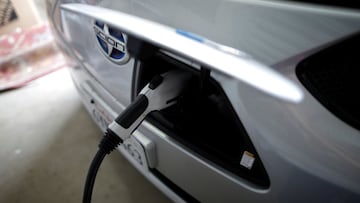When will the $12,500 EV tax credit be approved and sent?
In spite of Republican opposition, Senate Democrats are working to make changes to the EV tax credit which would increase the credits' value to $12,500.


This week, the Senate Finance committee hosted a heated hearing on a proposal to encourage investment in electric vehicle (EV) manufacturing. The measure, if passed would be included in a larger bill dubbed the Clear Energy for America Act. For those interested in purchasing an EV, the new legislation would increase the value of the tax credit available. Senators Debbie Stabenow of Michigan and Ron Wyden of Oregon are leading the effort. They argue that to make the US competitive in the renewable energy sector, the tax code must be modernized to encourage development and sway consumer choice.
Our MI automakers are the best in the world. They're making investments needed to electrify our industry so that we can compete & win. But they can't do it alone. That’s why I fought to strengthen this tax credit in the Clean Energy for America bill.https://t.co/V6IOdyT6sy
— Sen. Debbie Stabenow (@SenStabenow) May 29, 2021
The President has also shown support for initiatives to encourage the uptake of eclectic vehicles. The American Jobs Plan, introduced by the White House in April, would invest 174 billion dollars in the EV market. These funds would be targeted to “enable automakers to spur domestic supply chains from raw materials to parts, retool factories to compete globally, and support American workers to make batteries and EVs.” For consumers, the plan would also provide “point of sale rebates and tax incentives to buy American-made EVs.”
How is the current credit structured?
The initial EV tax credit was passed under the Energy Improvement and Extension Act of 2008. At the time, the law stated that the value of the credit was “equal to $2,500 plus, for a vehicle which draws propulsion energy from a battery with at least 5 kilowatt hours of capacity" and the value grew the more energy used to power the car came from electricity. The law capped the total value of the credit at $7,500.
However, claiming the credit is not as rewarding or straightforward as it seems. Those who purchase a qualifying vehicle are not given a check worth up to $7,500. Instead, if a taxpayer owes $4,000 in federal taxes, the credit is subtracted from the total amount due. However, if a taxpayer owes less than the credit value, the remaining balance cannot be redeemed.
The law also dictated that once a qualifying model reached 200,000 units sold, the credit would be phased out. Today, two companies, Tesla and General Motors, have reached this cap and are pushing to increase or remove it. General Motors stated that they hoped the President and Congress would evaluate the tax credit for EVs, saying, “That tax credit of $7,500 is significant in a purchase decision.” There is also support from auto worker unions, but leaders would like to see the credit applied to cars made in the United States.
How would this legislation change the structure?
There are a few fundamental changes this proposal would make to the tax code. First, it would place a limit on the total price of the cars eligible to $80,000. Also, the value of the credit increase if the the car is manufactured in the United States, and even more so if the workers who make the care are unionized. In total, the value of the credit could reach up to $12,500 for some consumers.
The Clean Energy for America Act also states that credit cannot be worth more than thirty percent of the value of the car and maintains many of the requirements included in the initial legislation. For example, cars that are leased or are bought to be resold do not qualify. To date, the bill does not change the way the credit is distributed, meaning that if someone owes less money in taxes than the value of the credit, they will not see a check for the remaining balance.
The bill would also lift the 200,000 limit and replace it with a market-based indicator that phases out the credit when EV consumption reaches fifty percent of cars purchased. In 2019, these numbers stood at a measly 4.2 percent of cars bought.
When could the bill be passed?
The bill currently has twenty-five co-signers, which aside from Independent Senator Angus King, are all Democrats. During the Senate Finance committee hearing, Republicans voiced their opposition and in the end, the measure on whether to bring the bill to a vote passed along a party-line vote.
Related stories
Senator Lindsey Graham of South Caroline argued that major us automakers have already stated that by 2035 their fleets will be electric adding that “To my Republican colleagues, it’s just a matter of time until most cars … will be running on something other than gasoline.” Senator Bill Cassidy of Louisiana argued that working-class families are not buying electric vehicles and that federal funds should not be used to subsidize consumers who do not need the support. Senator Stabenow pushed back on these remarks highlighting that the pre-sale data for electric trucks shows that demand is high across income groups.
Ford intends to boost spending on electric vehicles by about a third to $30 billion through 2025. The carmaker said EVs would make up 40% of production by 2030, and it announced it has 70,000 reservations for electric versions of its F-150 pickup truck. https://t.co/OAf3JeDM6V
— The New York Times (@nytimes) May 26, 2021
With Republican support in short supply, the chances of the legislation passing in the Senate are scarce with the filibuster in place. While Senate leadership could use a parliamentary tool known as budget reconciliation to pass the legislation, there is only a finite number of times a bill can be passed this way. The administration may push the Senate to use the budget reconciliation process, which only requires a simple majority on a bigger piece of legislation like the American Jobs Plan.

